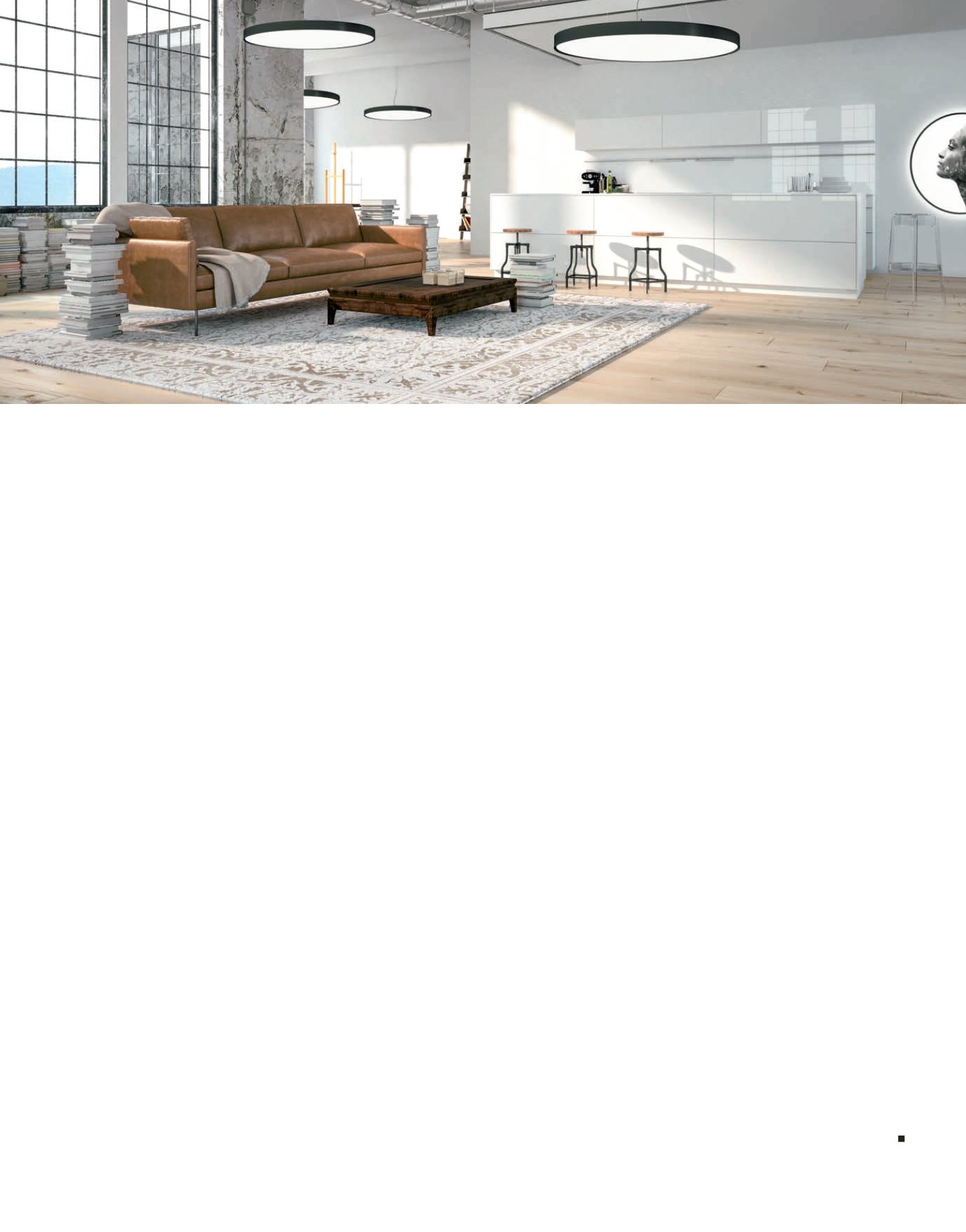

53
Officelayout 169
aprile-giugno 2017
Nymphenburg. The results have led Zumtobel
to identify three fundamental aspects of office
lighting in the new millennium: Holistic
Wellness (the central focus on human beings);
Connectivity and Look&Feel (interior design of
space). Three parameters that have marked
the Austrian group’s entry in the world of
Office 4.0, i.e. in the Internet of Things , and
the creation of fixtures capable of
customizing light for individual needs. Fixtures
for soft light with two luminous emission
components, diffused and direct, that work
separately but interact. Decorative fixtures
with optics to control brightness and
membranes that cut down on noise. Fixtures
capable of varying color temperature of light,
adapting to circadian rhythm.
“The entry of technical lighting in the world of
the IoT – Bettiol continues – happens above
all thanks to a new revolution in controls:
high-tech sensors capable of detecting
persons and vehicles in motion, identifying
specific work areas, generating adaptive
lighting, or assessing the component of
natural light in the space, while also regulating
intensity depending on the presence of
human beings. Obviously all this can be
customized and adapted to the needs of the
individuals using the space, with the
possibility of personalization of single
workstations. Sensors connected to a control
architecture that no longer simply regulates
light, but is also capable of supplying an
enormous quantity of environmental data,
transforming them into statistics that are
useful to improve efficiency and costs in a
complex building.”
A true revolution in progress, an epochal
change that makes the system of lighting,
control and service increasingly a single
package, indispensable, where there is less
room for improvising and there are more
opportunities to find synergies in a context of
integrated, modern and advanced design.
An optimal pairing:
maximum luminous comfort
and minimum bulk
In the development of the
Linetik floor lamp
the designers and engineers challenged
everything that until today has been
considered obvious in the lighting of offices,
reducing the physical bulk of the fixtures to a
simple line in space. In spite of its compact
size, the optical system manages to spread
optimum lighting on the worksurface. The
direct light
comes from a reflector based on
a new conception, made in composite
material and highly reflective aluminium
applied with steam. The
indirect emission
,
about 74%, happens through a special lens
that widens the light beam to create a
pleasant atmosphere.
To
regulate the light
advanced sensors have
been inserted, which improve user comfort
while offering potential energy savings of up
to 70%. The head of the fixture contains a
sensor that automatically turns the lamp on
or off depending on the presence of people.
It is joined by a photosensor that monitors
the lighting levels on the desk and regulates
them depending on the contribution of
daylight. Users can separately adjust direct
and indirect emissions, to find the right visual
conditions for the tasks they want to perform.
Luminance control and
sound absorption
in a single decorative fixture
To combine the appeal of a decorative fixture
with the performance of a technical product.
This is the challenge met by Zumtobel with
the
Ondaria system
– built-in, ceiling-
mounted or suspended – which enhances
architecture in a discreet way. The pure
geometric design makes it perfect for waiting
rooms, reception areas and breakout zones.
The large body spreads homogeneous
brightness almost like an artificial sun. The
pleasant diffusion and soft shadows create
a welcoming atmosphere. At the same time,
the intense luminance stimulates activity
and energy.
For application in office space the
Ondaria
LRO
version has been developed, with
microprismatic optics for optimal luminance
control (3000 cd/m²), even in situations where
people work with steeply angled monitors.
The
Ondaria Acoustic
version is designed
for open-plan areas or works of industrial
architecture where it is necessary to provide
for acoustic correction of spaces. The
double-layer fabric cover generates
homogeneous light emission while offering an
extraordinary sound absorption effect,
reducing reverberation and improving speech
comprehension.
Nelle architetture aperte,
ONDARIA acoustic
contribuisce a migliorare l’acustica degli ambienti e quindi la comprensione del parlato









